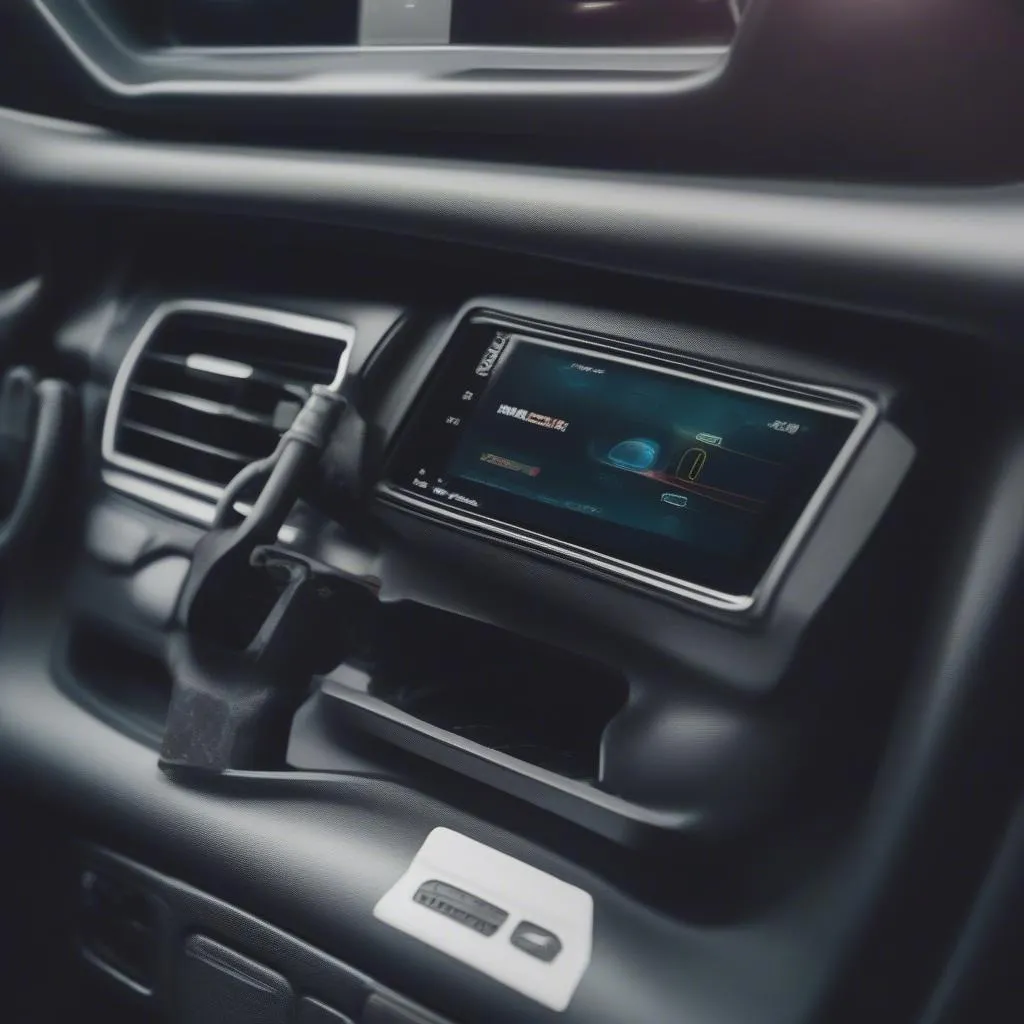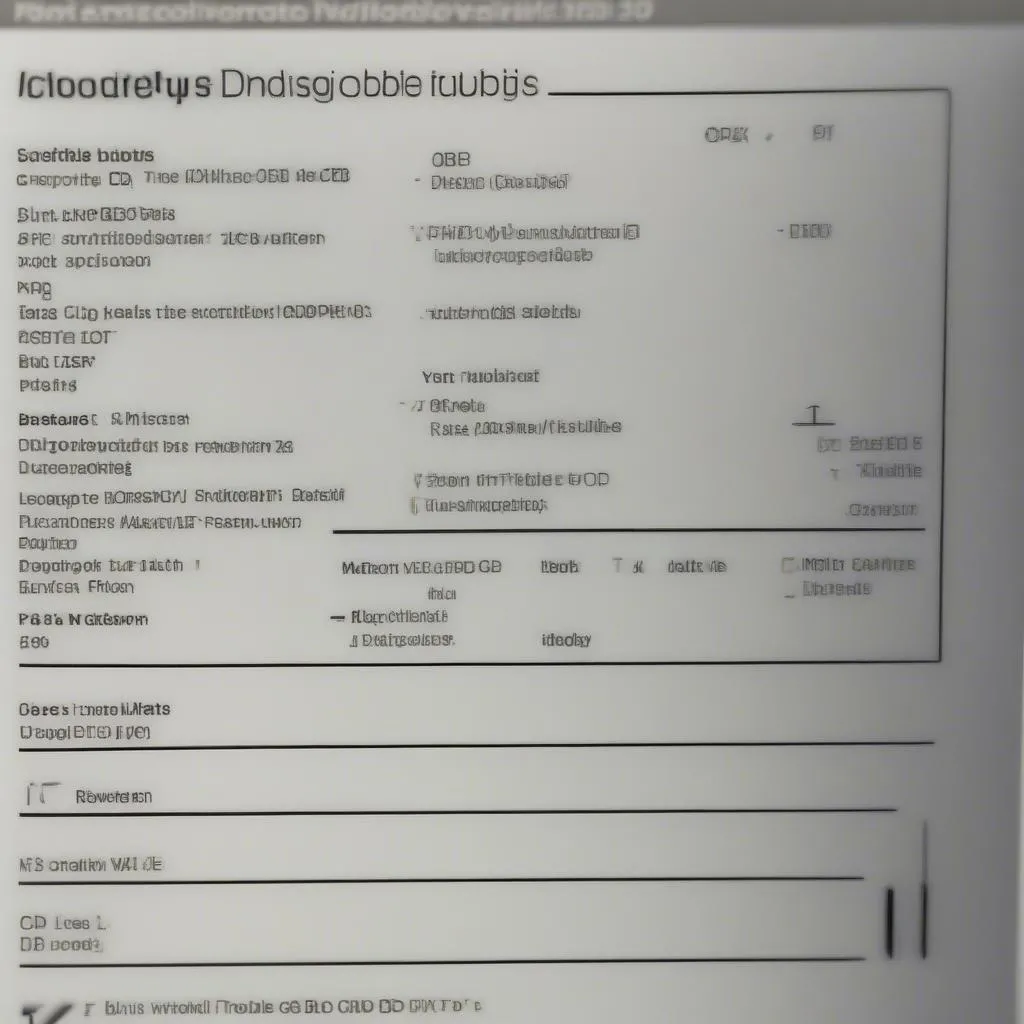Ever stared at your car’s dashboard like it was speaking a foreign language? That pesky “Check Engine” light can be a real mystery. But fear not, intrepid driver! An OBD scanner is the key to unlocking those cryptic codes and understanding what your car is trying to tell you.
Think of it like this: your car is basically a computer on wheels. And just like any computer, it has a way to communicate what’s going on under the hood. That’s where the OBD-II port and your handy OBD scanner come in.
What Does OBD Scanner Mean Anyway?
OBD stands for On-Board Diagnostics. It’s a standardized system that allows you (or your mechanic) to access your car’s computer system and retrieve diagnostic information. This information can include:
- Trouble Codes: Those pesky codes that trigger the “Check Engine” light.
- Sensor Data: Real-time readings from various sensors in your engine and emissions system.
- Vehicle Information: Stuff like VIN, mileage, and engine type.
The OBD-II port is like the access point to all this valuable data.
How To Hook Up An Obd Scanner: It’s Easier Than You Think
You don’t need to be a master mechanic to use an OBD scanner. Here’s a step-by-step guide to get you started:
-
Locate Your OBD-II Port: In most cars built after 1996, you’ll find the OBD-II port under the driver’s side dashboard, usually somewhere between the steering wheel and the driver’s side door. It’s a trapezoidal-shaped connector with 16 pins.
-
Turn Off Your Car: Before you connect anything, make sure your car’s ignition is switched off.
-
Connect the OBD Scanner: Plug the OBD scanner into the OBD-II port. You should hear a click when it’s securely connected.
-
Turn the Ignition On: Turn the key to the “on” position, but don’t start the engine. This powers up the OBD scanner.
-
Follow the On-Screen Instructions: Each OBD scanner is a bit different, but most will guide you through the process of reading and clearing codes. You may need to enter some basic information about your car, like the year, make, and model.
 OBD Scanner Connection
OBD Scanner Connection
Common Questions About Using an OBD Scanner
Q: What if my car doesn’t have an OBD-II port?
A: Cars built before 1996 may have an earlier version of the OBD system, or no on-board diagnostics at all. If you can’t find the standard OBD-II port, consult your car’s owner’s manual or a trusted mechanic.
Q: Can I clear my own trouble codes with an OBD scanner?
A: Yes, most OBD scanners allow you to clear codes. However, it’s important to note that simply clearing the code doesn’t fix the underlying problem. It’s always best to investigate and address the root cause of the issue.
Q: Do I need an expensive OBD scanner?
A: The cost of OBD scanners can range from around $20 for a basic code reader to hundreds of dollars for professional-grade models with advanced features. For most car owners, a mid-range scanner will provide plenty of functionality.
Choosing the Right OBD Scanner for Your Needs
With so many OBD scanners on the market, it can be tough to know which one is right for you. Here are a few things to consider:
- Features: Do you just need to read and clear basic codes, or are you looking for more advanced features like live data streaming and graphing?
- Compatibility: Make sure the scanner you choose is compatible with your car’s make and model.
- Ease of Use: Look for a scanner with a user-friendly interface and clear instructions.
 OBD Scanner Display
OBD Scanner Display
Need More Help with Your Car’s Diagnostics?
Don’t let car troubles leave you stranded! If you’re struggling to diagnose a car problem or need help interpreting OBD codes, our team of expert mechanics is here to assist. Contact us on WhatsApp at +84767531508 for 24/7 support and get your car back on the road in no time.
Ready to Take Control of Your Car’s Health?
Understanding how to use an OBD scanner is like having a secret weapon in your automotive arsenal. It empowers you to take charge of your car’s maintenance, troubleshoot issues, and maybe even save some money on costly repairs. So, grab yourself an OBD scanner, get familiar with your car’s inner workings, and drive with confidence!
Looking for more car maintenance tips and advice? Check out these related articles: